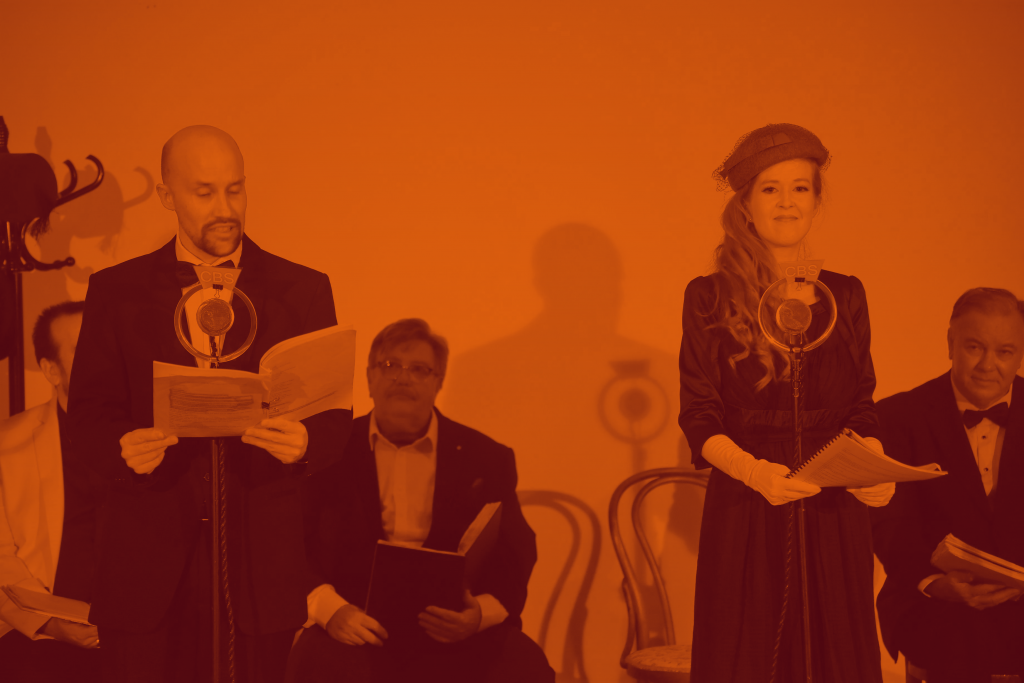
‘Casablanca’ // Nash Theatre
‘Casablanca’ was vintage.
As you enter the Brunswick room at New Farm Nash Theatre, there is no doubt that you are stepping back in time. A time when voice actors were dressed to the nines for an audience who would never see them, music was vinyl and smooth-talking salesmen schmoozed their punters on live advertisements with just the aid of a jingle.
In the seconds before the show started, the cast of ‘Casablanca’ were poised and elegant as they mingled at the front of the room, separated from the audience by 5 DIY retro microphones. “Going live in 10,9,8…”, they took their seats behind the microphones as the red light of “on-air” illuminated the space and the audience’s cued applause welcomed the producer DeMille (played by Luke O’Neill) to bring this classic story to life.
‘Casablanca’ is a story that everyone knows, knows of, or pretends to know. It’s a classic. Director Gary Kliger’s choice to perform it in radio play format provided a different theatrical experience Though it was somewhat removed from the epicness of the classic tale it brought focus instead to the 40s ambience that comes with radio plays. That being said, ‘Casablanca’ still had incredibly tender moments from the actors. Kilger’s strength as a director was emphasised through the balance he maintained between the comedy of the radio (especially the advertisements – most notably “Lux Soap”) and the truthfulness of the ‘Casablanca’ storytelling.
Due to ‘Casablanca’ being performed as a radio play, all the actors had their scripts in front of them which did sometimes hinder the acting and distance the audience from the action. Occasionally the actors would get slightly too comfortable with the script in hand and would read directly from the page, this would sometimes lead to them getting tongue-tied. In saying this, the use of the script actually enhanced some of the scenes. The audience became used to seeing the scripts in hand, however, in highly emotional scenes, most notably between Ilsa and Rick (played by Simone-Maree Dixon and Adam Libke), the script would fall limp at their sides as they became completely immersed in the scene. It blurred the lines between radio drama and live theatre which heightened the emotion and created a beautiful scene to behold.
Libke was strong as leading man Rick and had natural chemistry with Dixon who was completely believable as the emotionally conflicted Ilsa. Dominic Auer was also strong and suitably untouchable as Victor Laszlo.
An unsung hero of this production was Edward Haworth, who frequented the costume stand behind the actors as he tackled a vast array of roles and played each with clear distinction and one hundred percent commitment.
With a voice of silk, Gavin Zimmermann was the perfect announcer and was hilarious in the accuracy of his retro, suave, American salesman (alongside Georgiana Mannion and Constanza Acevedo Burckhardt), which really ensconced the audience in the time period.
As a professional voice over artist, it is no surprise that Luke O’Neill shone with his natural radio voice. O’Neill expertly executed the low gravitas needed for DeMille, with a jazzy singing voice that suited the era perfectly. His serious Strasser, perfectly complemented Cameron Castles’ stellar sarcastic comic timing as Renault, and the duo’s contrast and the chemistry really stole the show.
The most unique aspect of this production was, without a doubt, the Foley artist enacted by Barry Haworth. For every sound effect, Haworth reinvented his everyday objects with professionalism and fervour to time perfectly with the actors. Be it a door opening, crinkling newspapers to evoke letters rustling, bike wheels spinning for plane take off or the loud popping of balloons to terrify the audience as gunshots!
In conjunction with the sound effects breathing life into the story, the music (intelligently sourced and cut by Cameron Castles) was integral to evoking the classic vintage vibe (sound and lighting operated by Jonathan Collins). In emotional scenes, era-appropriate music would slowly start swelling identically to how it would in a classic movie, thus masterfully merging the mediums of theatre and radio play for a juxtaposed but rich theatrical experience.
Rounding out the production team, Marion Jones certainly deserves credit for sourcing the elegant gowns and suits. It truly immersed the audience in the classiness of the time and the veneration placed for the arts.
‘Casablanca’ was a nostalgic trip to a by-gone era. New Farm Nash Theatre should be congratulated for reviving this classic format and story for a modern audience to experience. In all the gin joints in all the world, it’s nice to have this little journey to the past nestled here in New Farm.
‘Casablanca’ plays at New Farm Nash Theatre until Saturday, 7 March 2020. Tickets are available on Nash Theatre’s Website.




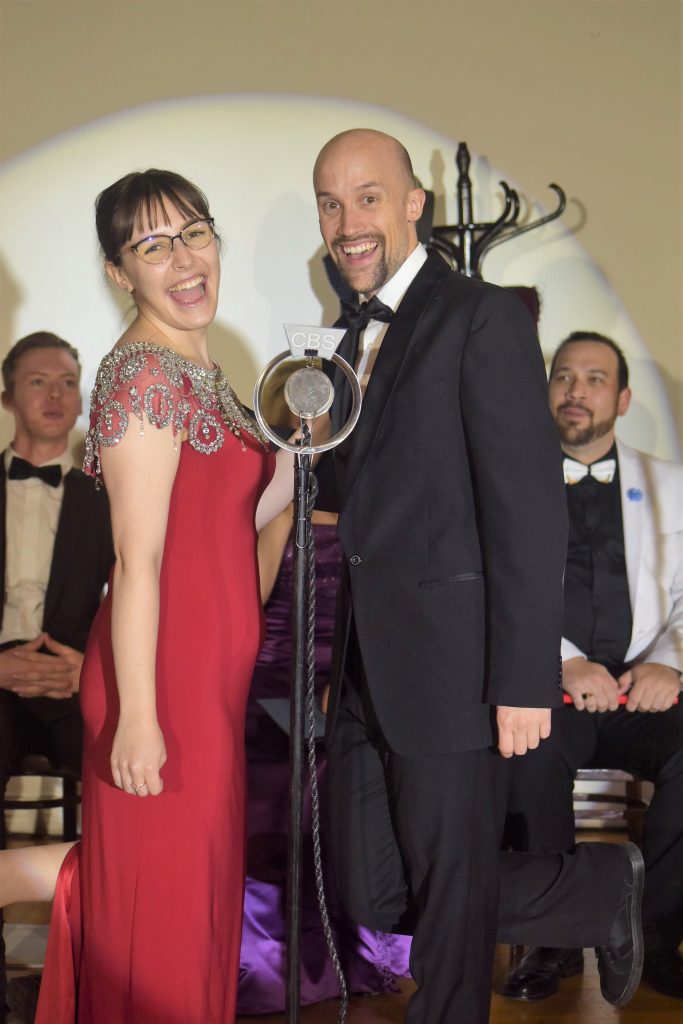
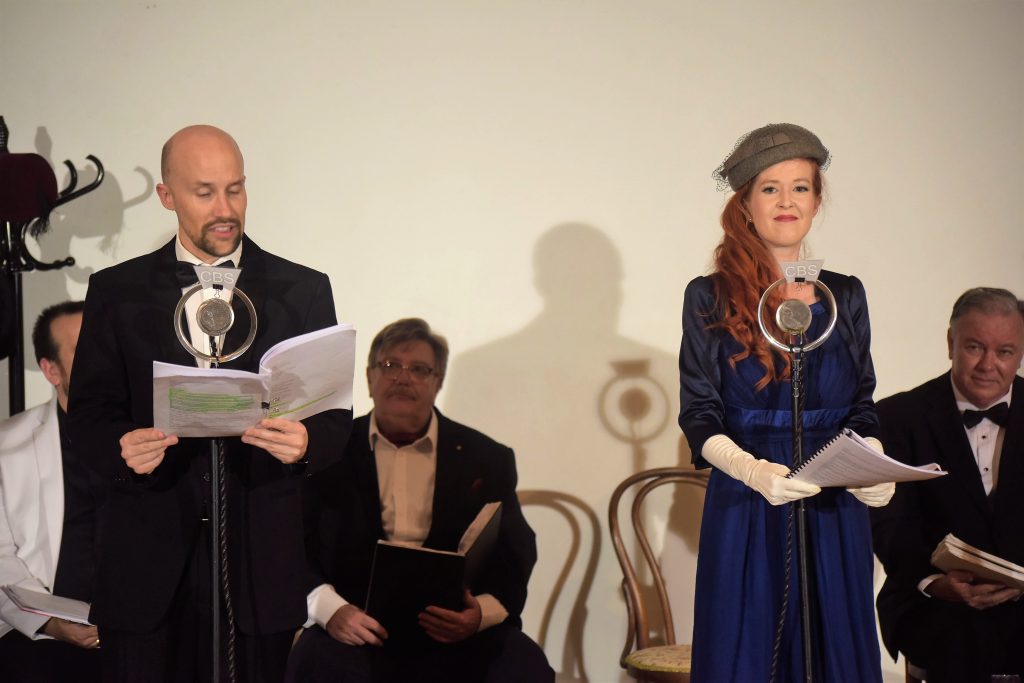
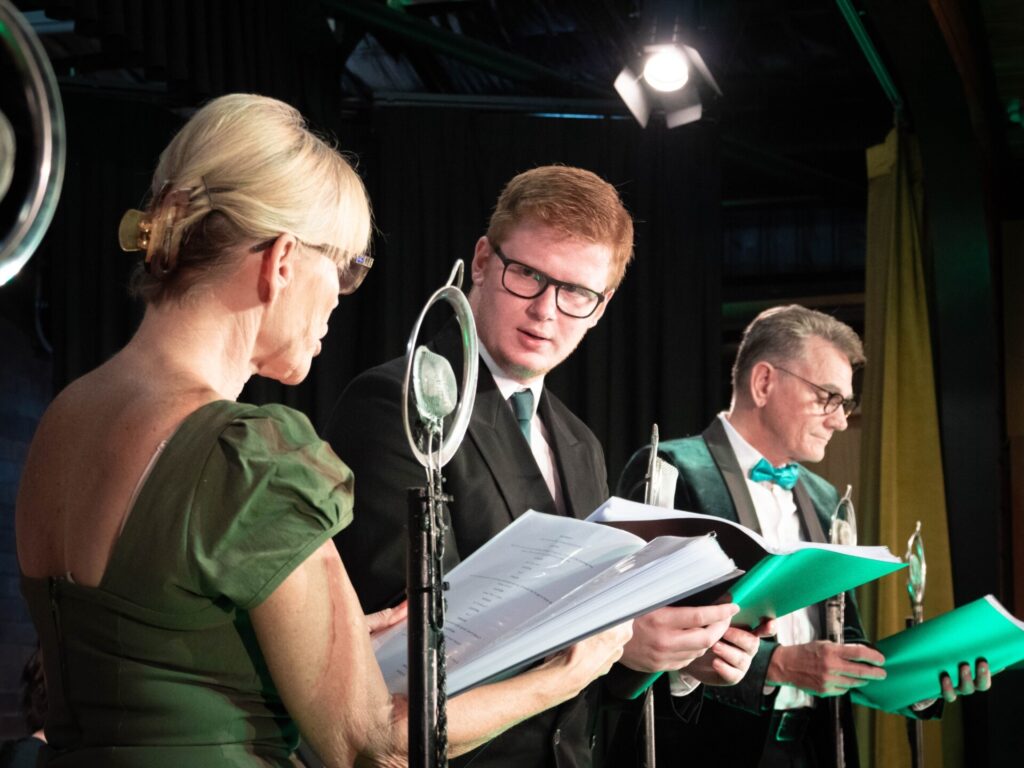

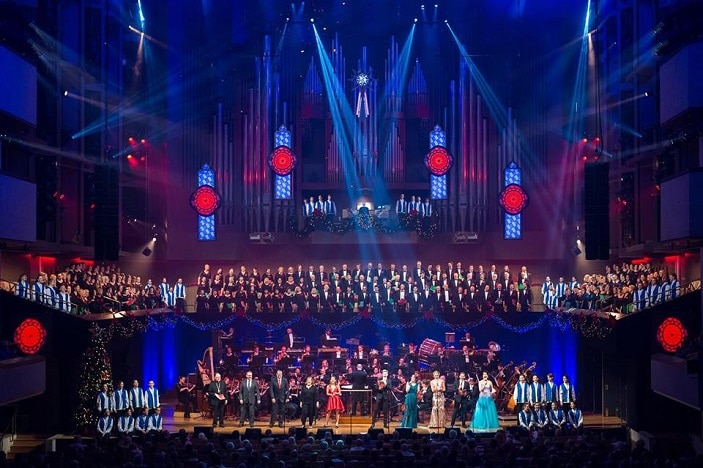
I am the director of the show, Gary Kliger. I wish to add for the record that the production is indebted to Cameron Castles, the actor who plays Renault, who, with great skill and care, sourced and cut together the music that is heard throughout the show. It provides great ambience and context and his contribution should be acknowledged.